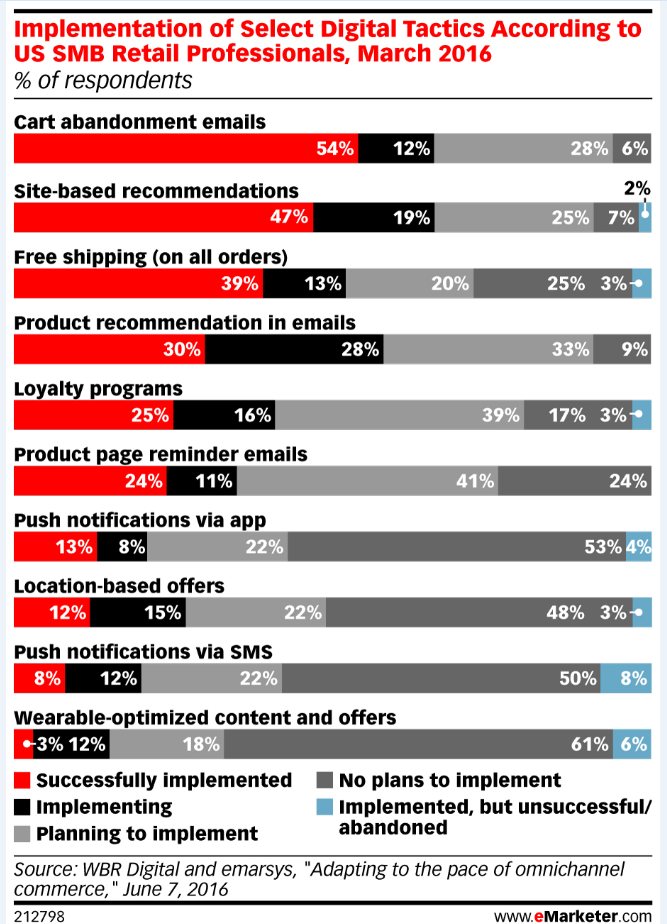Source: ReturnPath
Whether you love them or loathe them, abandoned shopping cart emails are an effective staple of any successful email marketing program. Surprisingly, however, just 54 percent of retail professionals have implemented cart abandoned emails as part of their email strategy according to a poll conducted by WBR Digital and emarsys.

Typically thought of as one of the most common types of triggered messages, abandoned cart emails allow retailers to quickly follow up with customers after they’ve abandoned an item in their cart and give them the extra push they need to complete the conversion. Based on data from Salesforce’s 2016 State of Marketing Report, 72 percent of all respondents agree that abandoned cart emails are one of the most effective email marketing tactics.

So why aren’t more retailers implementing this strategy as part of their email program? Whether this type of triggered message is missing from your own program or you’re looking to optimize your current abandoned cart email, here are some helpful tips to keep in mind:
Timing is critical: While you should test message timing to see what resonates best with your particular audience, research from Barilliance indicates that the highest conversion rate occurs when the abandoned cart email is sent within one hour of the event. While sending an email 24 hours after the event dropped the conversion rate by 40 percent (when compared to conversion rate at 24 hours).
Follow Up: If a customer does not convert from the first abandoned cart email, consider following up with a second or third message, spaced a day or two apart. The follow-up messages should use different subject lines and message content than the initial message while focusing on giving the customer that final push to convert.

Include product visuals: Although this sounds like a no brainer, it can often be overlooked. Be sure to include a visual of the product or products the customer left in the cart. Place the image at the top of the message so it’s the first thing the customer sees when opening the email. Include product details and pricing along with the image and give the customer as much helpful information as possible. Even consider including product reviews, which are a great way to help the customer make the final decision to purchase.
Provide incentives: Often time’s customers may have abandoned their cart because they decided against spending money on the purchase or they were indecisive and couldn’t decide whether or not they wanted to purchase that particular item. Considering this, an incentive offer—such as free shipping or 10 percent off—can be a great way to convince them to complete their purchase.
Offer alternatives: Besides featuring the product abandoned in the cart, use the abandoned cart message as an opportunity to showcase alternative products that may catch the customer’s eye instead. From related products to customer favorite products, this can help convince the customer to follow through with the conversion, even if it’s for a different product than what was initially abandoned.
Testing is key: Just as you should do for any new email you introduce into your program, test out your strategy before rolling it out to your entire audience. Make sure the timing, message, and strategy resonate well with your subscribers and modify as needed. Also make sure to periodically test some new additions or changes to your strategy, an effective way to continuously optimize your program.
Get ideas from the competition: Return Path’s Inbox Insight tool—powered by our Consumer Network consisting of over two million consumer inboxes—can give you an inside look into the abandoned cart strategy being used by your competitors. See which methods they’re using and if they’re working successfully or not. Not only will this help you get ideas to apply to your own your own program but it will also ensure your strategy is even strong and more optimized.
Besides abandoned cart emails, ensure you are also engaging with subscribers at other key points in the customer lifecycle. From a welcome email all the way through to a re-engagement email, triggered messages are critical for the success of your email program. For more ideas around effective email campaigns, check out our Email Marketing Lookbook.

